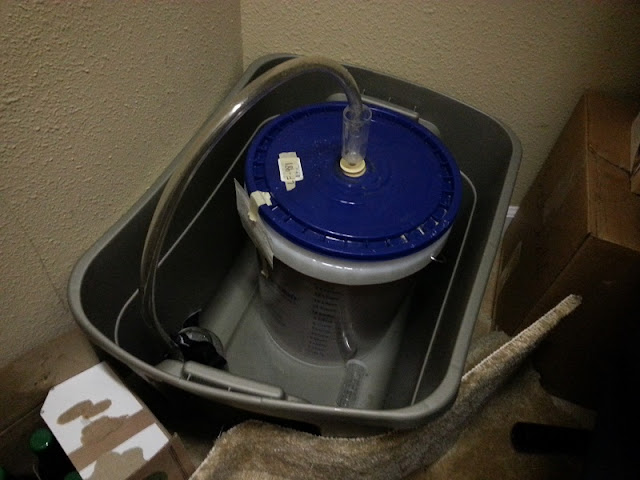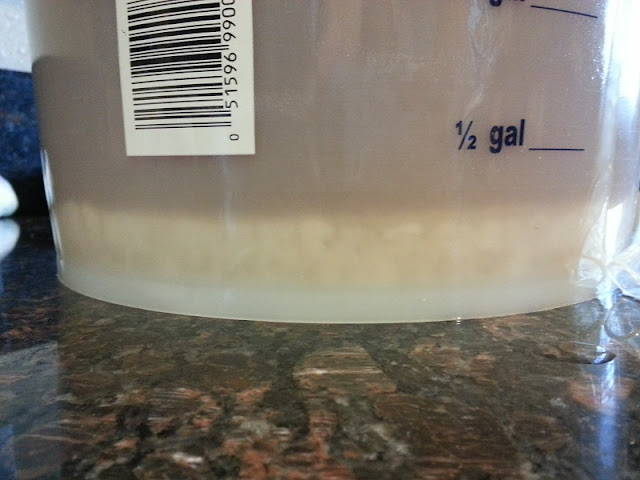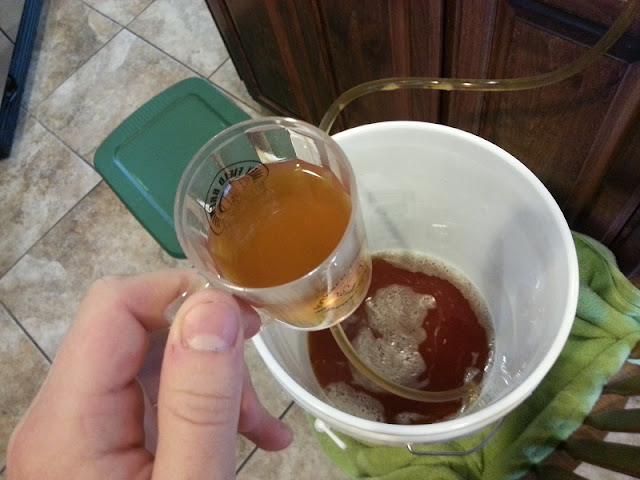All seemed well after the brewday for my
Sierra Nevada Celebration IPA clone, until 3 days into fermentation. I took a peak in the closet and noticed that there was a boatload of yeast caked into my airlock! Acting quickly, I remedied the situation, installing a blowoff tube into a jar.
 |
| The batch was saved... for now. |
After letting the pot ferment for ~2 weeks, it was time to siphon it over to secondary. The final gravity was
1.010, giving this brew
6.3% ABV. The original target for the beer I'm imitating is 6.8%, so I'm just a bit off.
 |
| Time to siphon this and dry hop it. |
My efforts to siphon away all the wort after using Irish Moss must have been mediocre, seeing all the trub and yeast stacked on the bottom of my fermenter. I guess the moss and the high flocculation of the yeast really cleared up this brew.
 |
| Nearly 1/4 gallon of trub! |
Popping open the lid, I began to see how violent the yeast was to my brew. The underside was completely caked with yeast.
 |
| A few of those bubbles look suspiciously like an infection |
 |
| What a mess! |
 |
| Much more clear after primary than many of my other brews |
Dry hopping only needed to be 5 days long. So I waited two days before popping the top and throwing in my hop pellets. My blind side-by-side taste testing will definitely show me the difference between using pellets and fresh hops.
 |
| Don't look Ken! |
After 5 days it was time to bottle. I did my best to prevent any hop particles from entering the bottling bucket, but that's a near impossible task.
 |
| It's a swamp! |
A sample I pulled during siphoning tasted good, near close to how the actual beer tastes. Carbonation should fix any inadequacies.
 |
| Yay beer! |
As I expected with the loss of liquid due to trub and hop paticles, yield came out to 35 bottles. There is something about all the brews I dry hop that cause me to only get 30 or so bottles out of my batches. I'll need to look into fixing this. Until this is carbonated, cheers!











No comments:
Post a Comment
Hi folks, please only leave comments relative to the blog post. All spam will be removed and spammers will be blocked.
Note: Only a member of this blog may post a comment.